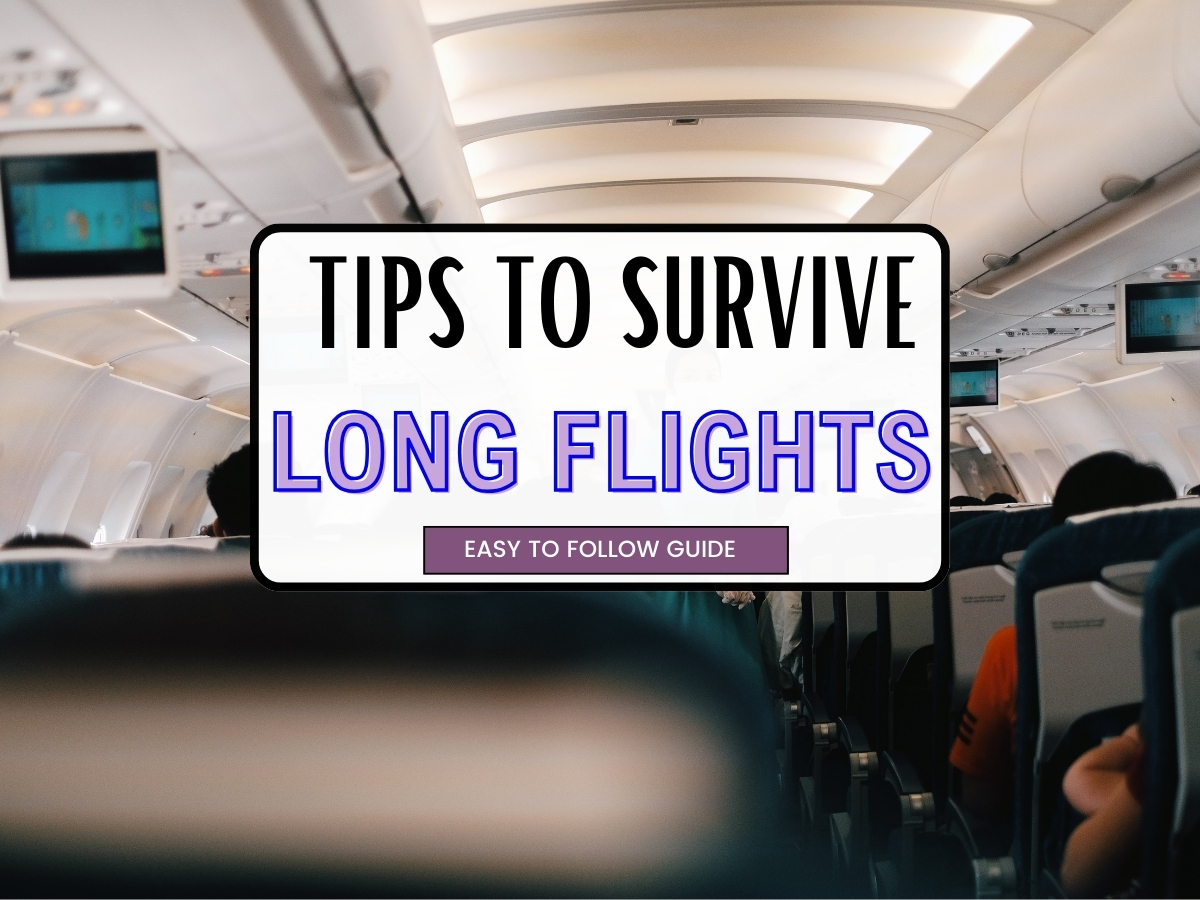How I Survive a Long Haul Flight: Travel Tips and Hacks for Airplanes

As an avid traveler who has endured more long-haul flights than I can count, I’ve become an expert in making it through those marathon airborne journeys in one piece. Those endless hours confined to a cramped seat can really take a toll, both physically and mentally. But I’ve picked up plenty of useful strategies over the years to help counter the discomforts and boredom of a lengthy flight.
It all starts with being proactive even before you board the plane. If you want to improve your chances of surviving the long haul with your sanity intact, begin prepping well in advance.
Picking the Right Flight
Wherever possible, I try to book a night flight for any ultra-long-haul journey. That way, I can hopefully sleep through a decent chunk of the tedious travel time. Red-eyes also tend to be less crowded than daytime flights, giving you a better shot at an empty neighboring seat or two for splaying out.
I also aim to fly with carriers that offer more generous seat pitch and width in economy class. A few highly-rated airlines for comfort include Singapore, Emirates, and Turkish. The few extra inches of legroom and elbow space can make a world of difference on a 12+ hour flight.
Finally, when it comes to the aircraft type, I’ll take a modern wide-body like the Airbus A350 or Boeing 787 Dreamliner every time if available for the route. Their advanced air filtration systems and humidity controls keep the cabin air feeling fresher over the course of a marathon flight.
In-Flight Essentials
To maximize my chances of feeling relatively human by the end of a long haul, I make sure to pack the right supplies in my carry-on. A well-stocked personal amenity kit is an absolute must. Mine always includes noise-canceling headphones, a cozy pair of socks, and a silk sleep mask and neck pillow. Quality earplugs are another smart pick for drowning out ambient plane noise.
Staying nourished and hydrated is another key to long-haul survival, so I bring an ample supply of healthy snacks and a reusable water bottle that I refill frequently. Fresh fruit, nuts, protein bars and single-serve packs of green powder make great options. Alcoholic beverages are best avoided, though, as they can heighten jet lag and dehydration.
I’ve found that dressing strategically in layers of breathable clothing really helps, too. This allows you to adjust to the fluctuating cabin temps, draping yourself with a jacket or scarf when there’s an overly chilly air vent blast. Wearing compression socks also promotes better circulation and minimizes swelling on those extended flights.
In-Flight Strategies
Once I’m airborne, I have a few go-to techniques to try to ease the passage of time. For distraction, I make sure to bring a few engaging magazines or books. Or I’ll load up my tablet with movies, shows, podcasts and games ahead of time. When it comes to testing out the in-flight entertainment, I make it a point to do so early before the system gets overburdened later on. Loading the movies beforehand makes sure you don’t have to depend on WiFi.
To stay limber and increase circulation, I’ll periodically take a stroll up and down the cabin whenever the seatbelt sign permits. I also make an effort to stretch my arms and legs while seated. Even simply rotating my ankles and giving myself a basic seated massage does wonders.
And of course, I try to sleep as much as possible on the marathon flights. I’ll take advantage of any quiet spells, dim lighting, and late night/early morning hours to doze off with my face mask and noise-cancelling headphones. Whenever possible, I avoid sleeping pills or alcohol, which can lead to dehydration and grogginess. But I do rely on natural sleep supplements like melatonin or anti-jet lag remedies if insomnia is plaguing me.
Post-Flight Recovery
Even implementing all of my long-haul survival tactics to the letter often isn’t enough to completely escape fatigue, discomfort and disorientation upon landing after an ultra-extended flight. That’s why I always try to give myself at least a day to recover before diving into any activities at my destination.
As soon as I’m off the plane, I’ll seek out bright sunlight to help reset my body clock. Getting outdoors for a short walk is also a priority, as circulation and movement both help to overcome the inertia of a long flight. I also make sure to drink plenty of water and eat healthy, balanced meals rich in protein.
Depending on what time zone I’m coming from, I may take a short nap upon arrival to refresh my energy reserves though I try not to sleep longer than a few hours or it risks compounding jet lag.
While following all these tips still won’t make a 15-hour flight from New York to Singapore exactly enjoyable, the methodical measures go a long way in minimizing the inevitable physical and mental fatigue that accompanies flying for so many hours on end. It may require some advanced planning and enduring some temporary discomfort, but getting to your dream destination on the other side is a reward worth the effort. Just remember to pace yourself, stay hydrated, bring the right supplies, and try to grab shut-eye whenever possible. It doesn’t eliminate long-haul pain completely, but these survival tactics help get you through long stretches of airborne agony relatively intact.
Side Note: There are an overwhelming amount of travel companies and websites these days. I like to use Trip.com for my airplane tickets. They are cheap, reliable and easy to use. Also, Trip Advisor has reviews on literally every travel destination. Happy traveling!
Easily save this article as a Pinterest Pin. Just click the Red P.






